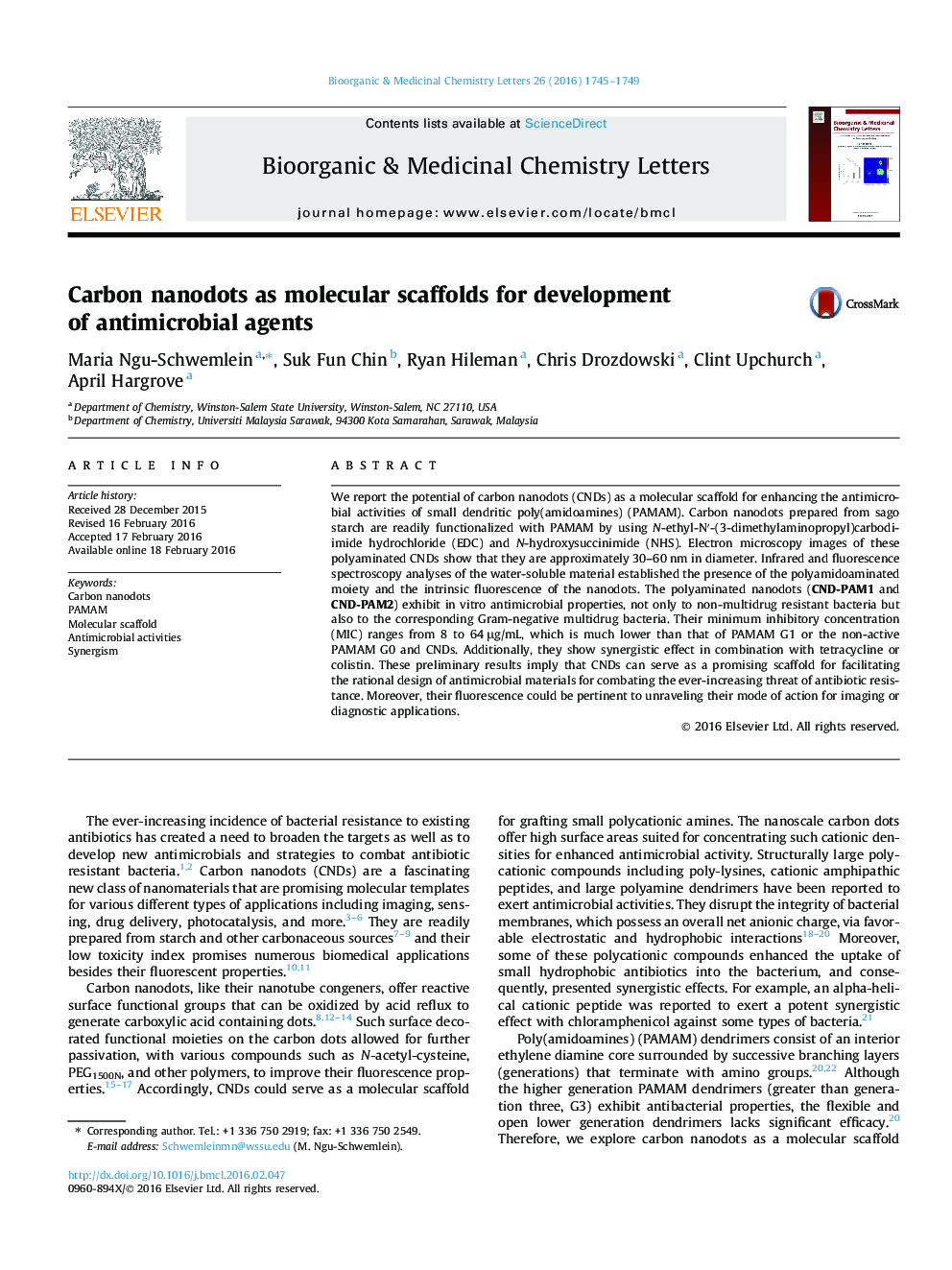| کد مقاله | کد نشریه | سال انتشار | مقاله انگلیسی | نسخه تمام متن |
|---|---|---|---|---|
| 1370014 | 981802 | 2016 | 5 صفحه PDF | دانلود رایگان |
We report the potential of carbon nanodots (CNDs) as a molecular scaffold for enhancing the antimicrobial activities of small dendritic poly(amidoamines) (PAMAM). Carbon nanodots prepared from sago starch are readily functionalized with PAMAM by using N-ethyl-N′-(3-dimethylaminopropyl)carbodiimide hydrochloride (EDC) and N-hydroxysuccinimide (NHS). Electron microscopy images of these polyaminated CNDs show that they are approximately 30–60 nm in diameter. Infrared and fluorescence spectroscopy analyses of the water-soluble material established the presence of the polyamidoaminated moiety and the intrinsic fluorescence of the nanodots. The polyaminated nanodots (CND-PAM1 and CND-PAM2) exhibit in vitro antimicrobial properties, not only to non-multidrug resistant bacteria but also to the corresponding Gram-negative multidrug bacteria. Their minimum inhibitory concentration (MIC) ranges from 8 to 64 μg/mL, which is much lower than that of PAMAM G1 or the non-active PAMAM G0 and CNDs. Additionally, they show synergistic effect in combination with tetracycline or colistin. These preliminary results imply that CNDs can serve as a promising scaffold for facilitating the rational design of antimicrobial materials for combating the ever-increasing threat of antibiotic resistance. Moreover, their fluorescence could be pertinent to unraveling their mode of action for imaging or diagnostic applications.
Figure optionsDownload as PowerPoint slide
Journal: Bioorganic & Medicinal Chemistry Letters - Volume 26, Issue 7, 1 April 2016, Pages 1745–1749
